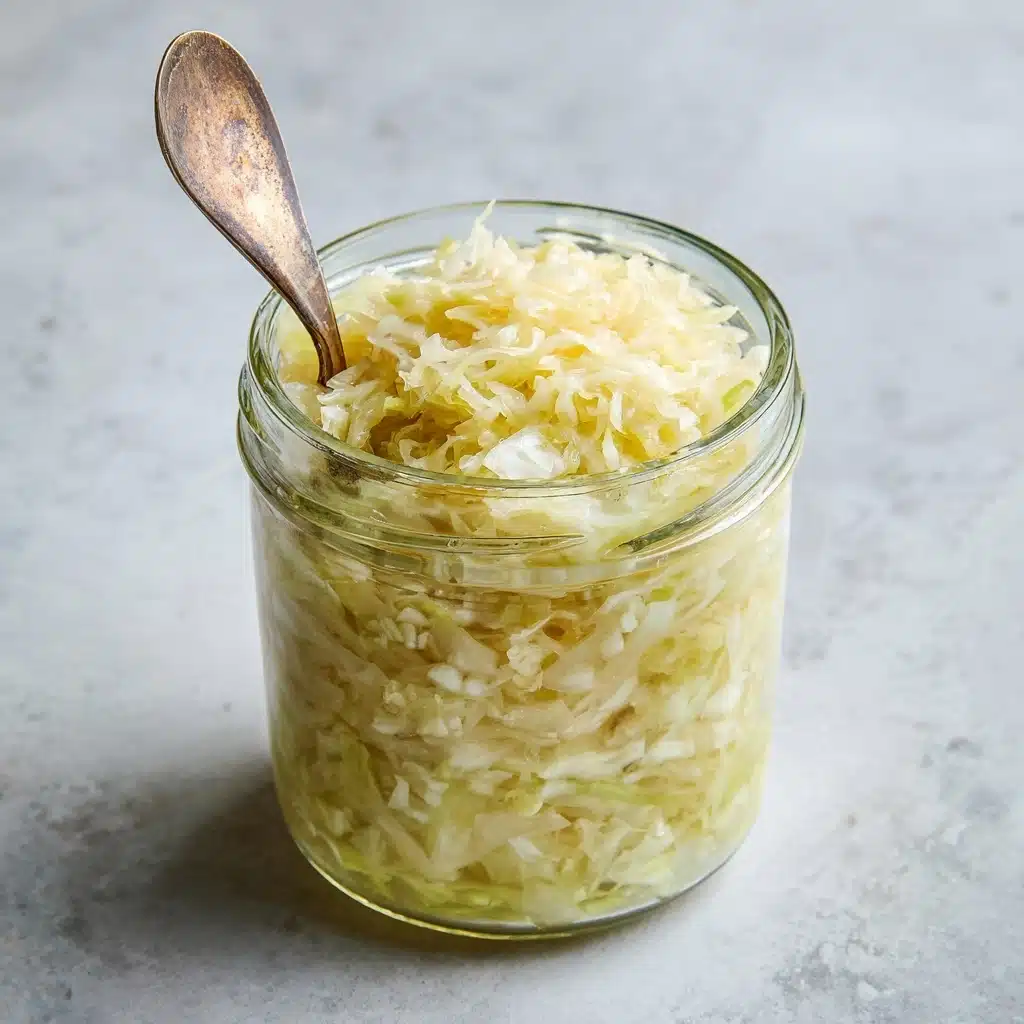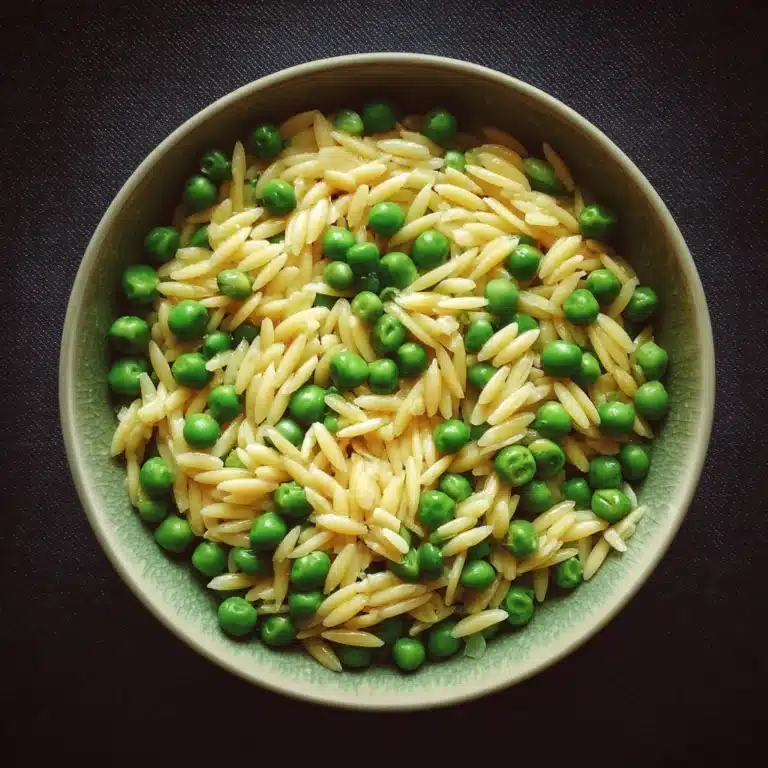Get ready to fall in love with this Homemade Sauerkraut Recipe! With just a few simple ingredients and a sprinkle of patience, you can create crunchy, tangy sauerkraut that’s worlds above what you’ll find in any grocery store. Not only is the flavor unmistakably fresh and vibrant, but making it yourself ensures a bounty of gut-friendly probiotics and that satisfying “I made this!” feeling. Whether you’re new to fermenting or a seasoned sauerkraut-maker, this recipe is sure to become a staple in your kitchen.
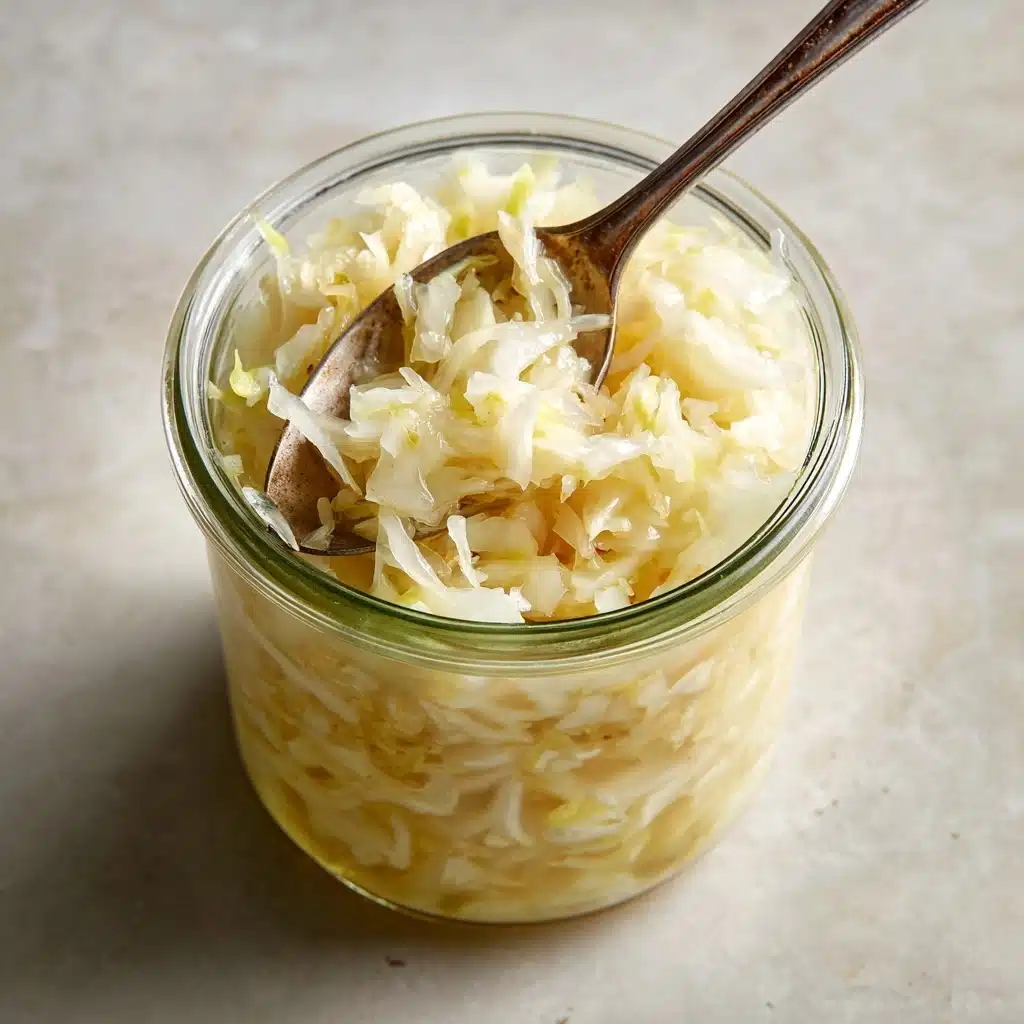
Ingredients You’ll Need
The beauty of this Homemade Sauerkraut Recipe is in its simplicity: each ingredient plays a specific part in developing bold flavor, perfect texture, and that classic sauerkraut snap. Here’s what you’ll need and why it matters:
- Green cabbage: The heart and soul of your sauerkraut; its sweetness and high water content are key for fermentation and texture.
- Sea salt (non-iodized): Essential for drawing out moisture, kickstarting fermentation, and keeping your kraut crisp and safe from unwanted bacteria.
- Caraway seeds (optional): These little seeds add a classic note of earthy, aromatic flavor that’s traditional in many sauerkraut recipes, but your kraut will shine without them too.
How to Make Homemade Sauerkraut Recipe
Step 1: Prep the Cabbage
Begin by removing any tough or wilted outer leaves from your cabbage, but don’t toss them all—set one aside for later use. Cut the cabbage into quarters, trim away the core, and then slice each quarter thinly. A sharp knife or mandoline makes quick work of this and helps ensure even fermenting. Thin slices mean more surface area, which equals more flavor!
Step 2: Salt and Massage
Transfer all your sliced cabbage to a large mixing bowl and sprinkle the sea salt evenly over the top. Now comes the fun part—dig in with your (very clean) hands and massage the cabbage vigorously for about 5 to 10 minutes. The salt draws out water, and as you work it in, you’ll notice the cabbage softening and releasing its juices. Don’t skimp on this step; those juices are the foundation of a great brine!
Step 3: Add Caraway Seeds (Optional)
If you’re using caraway seeds, sprinkle them in now and toss well to distribute their wonderful aroma and flavor throughout the cabbage. Feel free to experiment here—adding shredded carrots, garlic, or fennel seeds can elevate your kraut in new and delicious ways.
Step 4: Pack the Jar
Grab a clean quart-size glass jar. Start packing in your softened cabbage, pressing down firmly after each handful to encourage the brine to rise above the cabbage. A wooden tamper or the back of a spoon makes this step even easier, but elbow grease works, too. Leave about an inch of space at the top so you have room for the fermentation process.
Step 5: Weight and Cover
Remember that outer cabbage leaf you saved? This is its moment to shine! Lay it over the top of your packed cabbage to keep the fine shreds corralled together. Then add a fermentation weight or a smaller (clean) jar to help keep everything nice and submerged in brine. Cover the jar loosely with a cloth and rubber band or use a lid left slightly ajar to allow air flow.
Step 6: Ferment at Room Temperature
Place the jar in a cool, shaded spot in your kitchen. Over the next 1 to 3 weeks, magic happens—the cabbage transforms, developing tangy, satisfying flavor and irresistible crunch. Check after 7 days, tasting for your desired level of sourness. Once it hits that perfect tang and the kraut is bubbling, it’s ready! Pop it in the fridge to slow fermentation and keep the flavor just how you like it.
How to Serve Homemade Sauerkraut Recipe
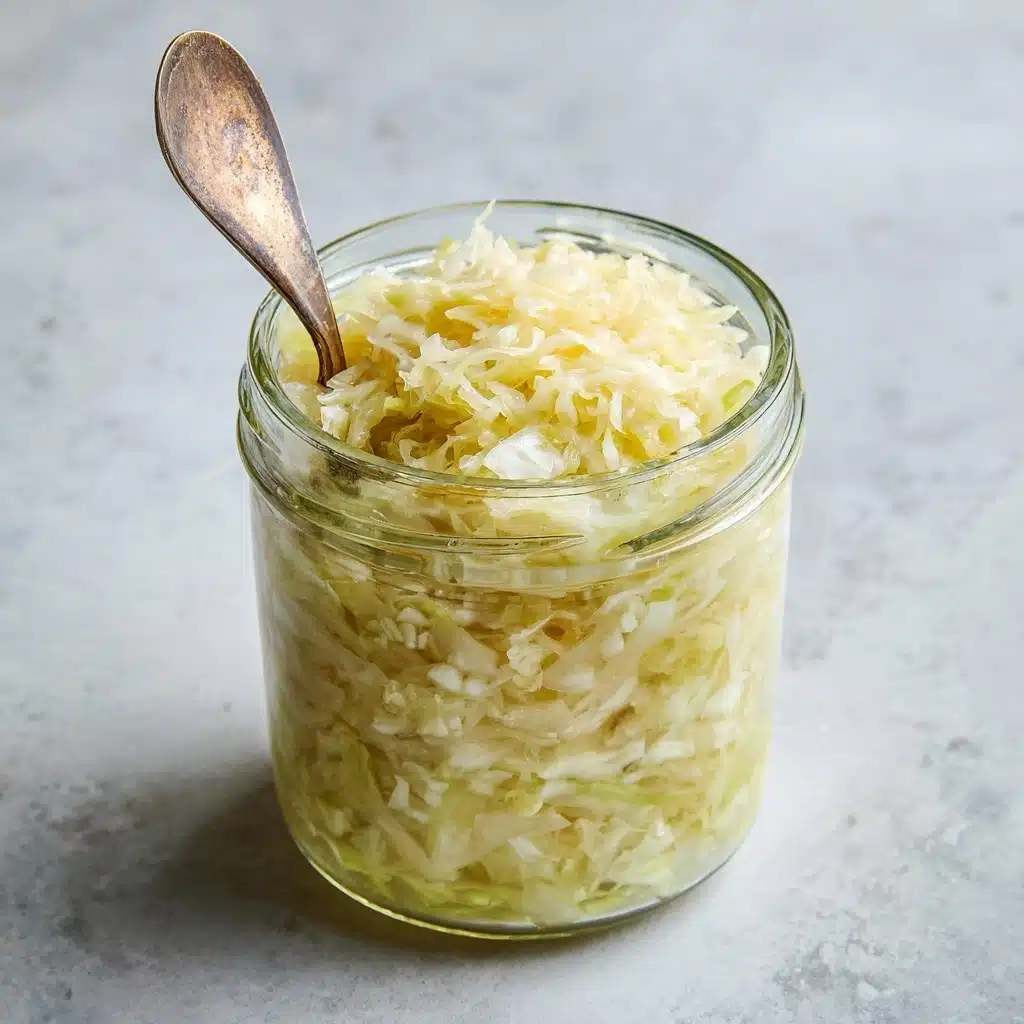
Garnishes
Homemade sauerkraut shines with a scatter of fresh chopped parsley, a pinch of dried chili flakes for some heat, or even a light drizzle of extra-virgin olive oil just before serving. Simple touches let the tangy kraut take center stage while adding a little color and extra flavor.
Side Dishes
This kraut is a classic alongside grilled sausages, roast chicken, or traditional German fare like schnitzel. Try pairing it with hearty stews, grain bowls, or use it to cut the richness of heavier dishes by adding a crisp, tart accent. The possibilities are practically endless!
Creative Ways to Present
The Homemade Sauerkraut Recipe is a scene-stealer on sandwiches (hello, Reuben lovers), on avocado toast, or folded into salads for a zingy crunch. Layer atop burgers, mix into a tangy slaw, or even swirl into dips for an unexpected probiotic boost.
Make Ahead and Storage
Storing Leftovers
Once your sauerkraut has reached peak flavor for you, store it in the refrigerator tightly sealed in its original jar. It’ll keep for months, getting a little tangier as time passes, but always staying crisp and delicious as long as everything stays submerged in its brine.
Freezing
Did you know sauerkraut freezes surprisingly well? Portion it into freezer-safe bags or containers, pressing out as much air as possible, and freeze for up to 6 months. While it may lose a bit of crunch, the flavor stays bold and perfect for cooked dishes like soups or casseroles.
Reheating
If you’d rather enjoy your kraut warm, simply scoop out a portion and lightly heat it in a saucepan or microwave. Add a splash of water if needed to keep it from drying out, but avoid boiling to preserve the probiotics and flavor.
FAQs
Is it safe to eat sauerkraut during fermentation?
Absolutely! As long as you’re following clean practices and the cabbage stays submerged in its brine with no signs of mold, it’s safe to taste as it ferments and see how the flavor is progressing.
How do I know if my Homemade Sauerkraut Recipe has gone bad?
If you spot mold, notice a foul odor (not the regular tangy scent), or see unusual colors not typical for cabbage, it’s best to compost that batch and start over. Good, healthy kraut smells pleasantly sour and looks vibrant.
Why is it important to use non-iodized salt?
Non-iodized salts like pure sea salt or kosher salt ensure proper fermentation, as iodine can inhibit the friendly bacteria we want for our sauerkraut and affect the final taste and crunch.
Can I add other vegetables to this Homemade Sauerkraut Recipe?
Definitely! Mix in shredded carrots, beets, garlic, or fennel for exciting new flavors and gorgeous color variations. Just keep the overall salt-to-vegetable ratio the same for reliable fermentation.
Does Homemade Sauerkraut Recipe need to be kept in the dark while fermenting?
While it doesn’t have to be in complete darkness, it’s best to ferment your sauerkraut in a cool, shaded area out of direct sunlight to keep temperatures steady and encourage the best flavors.
Final Thoughts
I hope you dive into this Homemade Sauerkraut Recipe and discover how incredibly fun and satisfying home fermentation can be. Each crunchy bite is proof that sometimes the simplest, oldest methods truly make the most extraordinary flavors. Give it a try, and your sandwiches, dinners, and gut will thank you!
Print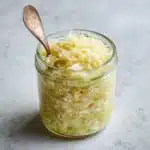
Homemade Sauerkraut Recipe
- Total Time: 20 minutes plus 1-3 weeks fermentation
- Yield: 1 quart 1x
- Diet: Vegan
Description
Learn how to make your own homemade sauerkraut, a probiotic-rich fermented cabbage dish that is great for gut health. This easy recipe yields a tangy and bubbly sauerkraut in just a few weeks of fermentation.
Ingredients
Cabbage:
- 1 medium green cabbage (about 2 1/2 pounds)
Sea Salt:
- 1 1/2 tablespoons sea salt (non-iodized)
Caraway Seeds (optional):
- 1 teaspoon caraway seeds
Instructions
- Prep the Cabbage: Remove outer leaves and set one aside. Cut cabbage into quarters, remove core, and slice thinly.
- Massage with Salt: Place cabbage in a bowl, sprinkle with salt, and massage for 5-10 minutes until limp.
- Add Caraway Seeds: Mix in caraway seeds if desired.
- Pack in Jar: Pack cabbage tightly into a clean quart-size jar.
- Fermentation Setup: Use reserved outer leaf as a topper, add a weight, cover, and ferment for 1-3 weeks.
- Check and Refrigerate: Taste after 7 days, refrigerate when tangy and bubbly.
Notes
- Store-bought sauerkraut lacks live cultures—this homemade version is rich in probiotics.
- Fermentation time varies with room temperature.
- For added flavor, try adding shredded carrots, garlic, or fennel seeds.
- Prep Time: 20 minutes
- Cook Time: 0 minutes
- Category: Fermented Foods
- Method: Fermentation
- Cuisine: German, Eastern European
Nutrition
- Serving Size: 1/4 cup
- Calories: 10
- Sugar: 1g
- Sodium: 200mg
- Fat: 0g
- Saturated Fat: 0g
- Unsaturated Fat: 0g
- Trans Fat: 0g
- Carbohydrates: 2g
- Fiber: 1g
- Protein: 0g
- Cholesterol: 0mg
